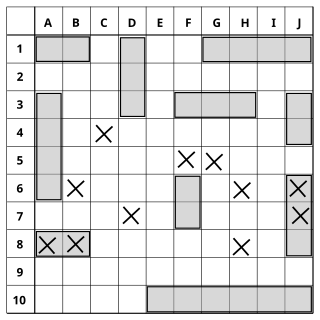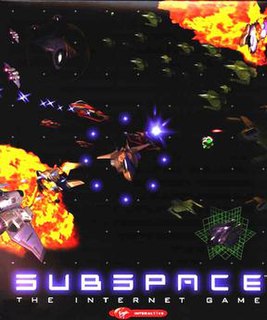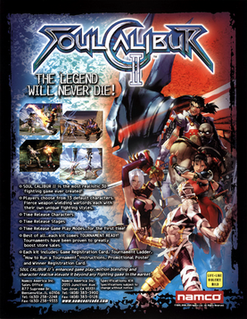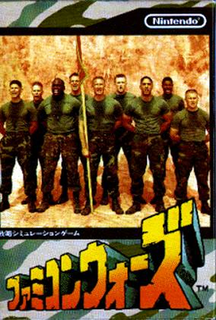
A handheld game console, or simply handheld console, is a small, portable self-contained video game console with a built-in screen, game controls and speakers. Handheld game consoles are smaller than home video game consoles and contain the console, screen, speakers, and controls in one unit, allowing people to carry them and play them at any time or place.

The Microvision is the first handheld game console that used interchangeable cartridges and in that sense is reprogrammable. It was released by the Milton Bradley Company in November 1979 for a retail price of $49.99.

Mario Party 3 is a party video game developed by Hudson Soft and published by Nintendo for the Nintendo 64. The third installment in the Mario Party series, it was first released in Japan on December 7, 2000, in North America on May 7, 2001, in Australia on September 3, 2001, and in Europe on November 16, 2001. As with the previous installments, the player chooses between eight playable characters: Mario, Luigi, Princess Peach, Yoshi, Wario, and Donkey Kong from the first two games, alongside newcomers Princess Daisy and Waluigi. The game features duel maps, where two players try to lower each other's stamina to zero using non-player characters such as Chain Chomps.

Mario Party 2 is a 1999 party video game developed by Hudson Soft and published by Nintendo for the Nintendo 64. The second game in the Mario Party series, it was released in Japan in December and worldwide in 2000. The game received mostly positive reviews, who praised the improvements they made to the original, the multiplayer and minigames, but criticized the lack of originality, while graphics received a better but otherwise mixed response.

Battleship is a strategy type guessing game for two players. It is played on ruled grids on which each player's fleet of warships are marked. The locations of the fleets are concealed from the other player. Players alternate turns calling "shots" at the other player's ships, and the objective of the game is to destroy the opposing player's fleet.
A multiplayer video game is a video game in which more than one person can play in the same game environment at the same time, either locally on the same computing system, on different computing systems via a local area network, or via a wide area network, most commonly the Internet. Multiplayer games usually require players to share a single game system or use networking technology to play together over a greater distance; players may compete against one or more human contestants, work cooperatively with a human partner to achieve a common goal, or supervise other players' activity. Due to multiplayer games allowing players to interact with other individuals, they provide an element of social communication absent from single-player games.

SubSpace is a 2D space shooter video game created in 1995 and released in 1997 by Virgin Interactive which was a finalist for the Academy of Interactive Arts & Sciences Online Game of the Year Award in 1998. SubSpace incorporates quasi-realistic zero-friction physics into a massively multiplayer online game. It is no longer operated by VIE; instead, fans and players of the game provide servers and technical updates. The action is viewed from above, which presents challenges very different from those of a three-dimensional game. The game has no built-in story or set of goals; players may enter a variety of servers, each of which have differing objectives, maps, sounds, and graphics.

Soulcalibur II is a 2002 fighting game developed by Project Soul and published by Namco and the third installment in the Soulcalibur series of weapon-based fighting games. It is the sequel to Soulcalibur, which was released in July 1998. Originally intended to be released on Sega's NAOMI board, the game was released on the Namco System 246 arcade board before being ported to the PlayStation 2, GameCube and Xbox in 2003.

Enemy Territory: Quake Wars is a first-person shooter video game developed by Splash Damage and published by Activision for Microsoft Windows, Linux, Mac OS X, PlayStation 3 and Xbox 360. The game was first released in the PAL region on September 28, 2007, and later in North America on October 2. It is a spinoff of the Quake series and the successor to 2003's Wolfenstein: Enemy Territory.

Famicom Wars is a wargame developed by Nintendo and Intelligent Systems and published by Nintendo for the Famicom. It was released on August 12, 1988 in Japan. It was later re-released on Virtual Console. It is the first game in the Wars series.

Gaplus is a 1984 fixed shooter arcade game developed and released by Namco. It is the third game in the Galaxian series, serving as a direct sequel to Galaga (1981). In North America, a modification kit was later released to change the name to Galaga 3, possibly to reflect its position in the series. It was the only game other than Phozon to run on the Namco Phozon hardware. A contemporary home port for the Commodore 64 was released in 1988. A "demastered" version of the game was included in Namco Museum Archives Vol. 2 as a bonus title.

Red Steel is a first-person shooter video game published by Ubisoft for Nintendo's Wii console. It was developed by the Ubisoft Paris studio. Red Steel was released on November 19, 2006 in North America, the date of the Wii launch. It has spawned a stand-alone sequel, Red Steel 2, which was released on March 23, 2010.

Puzzle Pirates is a massively multiplayer online game developed by Three Rings Design. The player takes the role of a pirate, adventuring on the high seas and pillaging money from roaming enemy ships. The mechanics of Puzzle Pirates are driven by puzzles. For example, to effectively sail a ship, players must play puzzle games representing work at the sails for speed, pumping bilge water to remove it from the ship, and carpentry to fix any damage the ship may take.

Star Trek: Phaser Strike is a shoot 'em up video game that was published by Milton Bradley in 1979, and released for the Microvision at the same time as the film Star Trek: The Motion Picture. In the game, the player must destroy ships with phaser banks located at the bottom of the screen. The Star Trek name was later dropped and the game was sold as Phaser Strike. It was sold under other names internationally: Shooting Star in Germany, Italy and UK, and Cannon Phaser in France and Canada.

seaQuest DSV is an action/strategy video game depiction of the seaQuest DSV television series for developed by Sculptured Software. A Super Nintendo Entertainment System version was published in 1994 and a Sega Genesis port in 1995. The player captains the submarine seaQuest DSV 4600 to carry out a series of missions in a scrolling, underwater environment.

World of Warships is a free-to-play naval warfare-themed multiplayer online game, developed. produced and published by Wargaming. Players can battle others at random or play cooperative battle types against bots or an advanced player versus environment (PvE) battle mode. For the most skilled players, two seasonal competitive modes are also available. The free-to-play structure is of the "freemium" type. Significant progress can be made without purchasing anything, but access to higher levels of play and additional warships becomes progressively more difficult without financial investment.

Destiny is an online-only multiplayer first-person shooter video game developed by Bungie and previously published by Activision. Destiny is now self-published by Bungie after separating from Activision in 2019. It was released worldwide on September 9, 2014, for the PlayStation 3, PlayStation 4, Xbox 360, and Xbox One consoles. Destiny marked Bungie's first new console franchise since the Halo series, and it was the first game in a ten-year agreement between Bungie and Activision. Set in a "mythic science fiction" world, the game features a multiplayer "shared-world" environment with elements of role-playing games. Activities in Destiny are divided among player versus environment (PvE) and player versus player (PvP) game types. In addition to normal story missions, PvE features three-player "strikes" and six-player raids. A free roam patrol mode is also available for each destination which feature public events. PvP features objective-based modes, as well as traditional deathmatch game modes.

Geometry Dash is a series of music platforming video games developed by Swedish developer Robert Topala, also known as RobTop. The first game, known simply as Geometry Dash, was released on 13 August 2013, on iOS and Android, and a Steam version was released on 22 December 2014. In Geometry Dash, players control the movement of an icon and navigate along music-based levels, while avoiding obstacles such as spikes that instantly destroy the icon on impact.

The 1970s was the first decade in the history of the video game industry. The 1970s saw the development of some of the earliest video games, chiefly in the arcade game industry, but also several for the earliest video game consoles and personal computers.
















